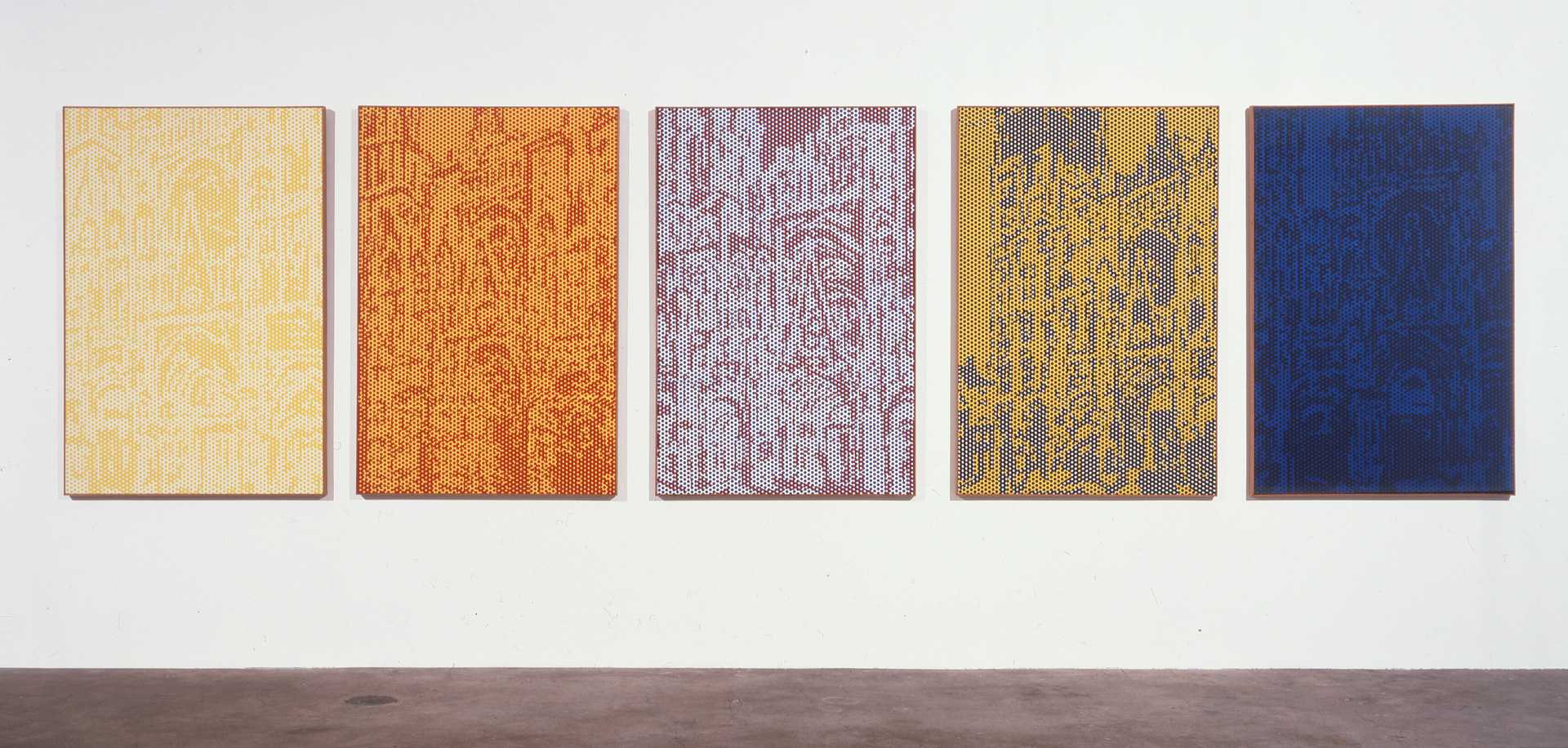
Rouen Cathedral, Set 3
© Estate of Roy Lichtenstein
Inspired by an exhibition of serial artworks that featured impressionist Claude Monet’s famous paintings of Rouen Cathedral, Roy Lichtenstein, never shy about appropriating a theme, embarked on his own Cathedral series. Unlike Monet, who painted at the site of the cathedral over the course of two years, observing the change of color and contours as light moved across the building’s surface, Lichtenstein did not paint from life. Monet’s quintessentially painterly approach stands in sharp contrast to Lichtenstein’s commercially influenced style. Yet, impressionism’s staccato brushwork and unmixed colors are a logical antecedent to Lichtenstein’s primary colors and benday dots — a cheeky update on a movement and an artist.
Roy Lichtenstein is one of the founders of American Pop art. He was born in New York, the son of a real estate agent and homemaker, and was part of a generation whose young adulthood experiences were defined by World War II. He studied with artist Reginald Marsh at the Art Students League and went on to attend and make art at Ohio State University. His academic life at OSU was interrupted by the war and service in the infantry. His early work was highly interested in American mythologies and frequently referred to images of early American history taken from genre painting.
Lichtenstein’s painting changed radically in the early 1960s. He began to use imagery found in advertising and comic books; sources that would have been considered outside of art’s usual subject matter and formal concerns. Over the course of decades, however, Lichtenstein’s innovations came to symbolize art’s collision with popular culture, a collision that continues to develop today. From comic exaggerations of advertising to images of war, cartoon icons to consumer goods, anything and everything printed and distributed in American culture was a potential subject for Lichtenstein’s painting.
While the subject matter of Lichtenstein’s work often takes center stage, his engagement with the conventions of printing and advertising, and how those conventions affect vision, was of central importance to his studio practice. Benday dots, hatch marks, blocked coloring and shadows, and the delineation of forms with simple black lines became part of Lichtenstein’s toolbox. These strategies of mechanized visual shorthand were employed to reexamine art history through the lens of contemporary life.
In five thousand paintings, prints, drawings, sculptures, murals, and other objects, Lichtenstein systematically studied and experimented with many of the concerns, philosophies, and genres of art. He was particularly interested in how painting represents the world, and how various art movements, like impressionism, cubism, and expressionism, put forth different claims about what that representation was capable of achieving. Lichtenstein reproduces, exaggerates, puns, parodies, satirizes, and, most importantly, tests these theories and approaches in a body of work that has become foundational to any understanding of post-war American art.